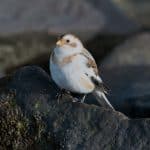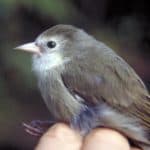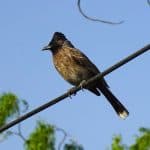Common Name: Yellow-billed Cardinal
Scientific Name: (Paroaria capitata)| Size | Diet | Range in Hawaii | Status in Hawaii |
|---|---|---|---|
| 7 in. | seeds, fruits, insects, and nectar | Big Island | Least Concern |
The Yellow-billed Cardinal, also known as Paroaria capitata, is a small songbird species that is native to South America. While the species is not native to Hawaii, it has been long established and is considered a naturalized (non-native) resident of the islands. With its bright yellow beak and striking appearance, the Yellow-billed Cardinal is a fascinating bird species that has captured the attention of birdwatchers and avian enthusiasts around the world.
In this article, we will explore the world of the Yellow-billed Cardinal, its unique characteristics, and its presence in Hawaii.
Yellow-billed Cardinal
Appearance
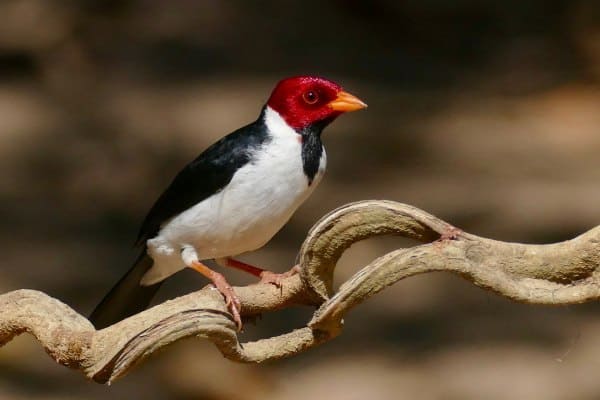
The Yellow-billed Cardinal boasts a striking presence with its vivid plumage and unique features. Standing about 7 inches tall, this avian wonder captivates with its brilliant red crest and eye-catching black mask. Its body showcases a rich blend of red and brown hues, while its namesake yellow bill stands out boldly against the colorful backdrop.
Diet
This charming bird displays an eclectic palate, feasting on a diverse array of offerings. Its diet consists of seeds, fruits, insects, and even nectar. From savoring the sweetness of nectar to indulging in the crunch of seeds and the juiciness of fruits, the Yellow-billed Cardinal’s menu reflects its ability to find sustenance amidst the varied bounty of its habitat.
Nesting
High amidst the verdant foliage, the Yellow-Billed Cardinal embarks on a meticulous endeavor – crafting a nest that’s a symphony of precision and artistry. Using a medley of twigs, leaves, and delicate fibers, the cardinal meticulously constructs a cup-shaped cradle that’s both a fortress and a sanctuary.
But it’s not just the construction that dazzles; it’s the prime location chosen with the flair of a connoisseur. The cardinal’s nest is often nestled within the embrace of thick shrubbery or nestled atop a slender branch, offering a discreet haven where its vibrant plumage blends seamlessly with the surrounding foliage.
As dawn breaks, the true marvel unfolds. The male Yellow-Billed Cardinal transforms into a virtuoso, serenading the world with a melodious symphony of calls and songs. This is not just a display of vocal prowess; it’s a declaration of love and dedication to his mate and their soon-to-arrive fledglings.
Throughout the nesting period, both parents share the role of guardians, ensuring the fragile lives they’ve nurtured remain safe from the world’s grasp. Together, they stand watchful and fierce, warding off potential threats and braving the elements as a united front.
Behavior
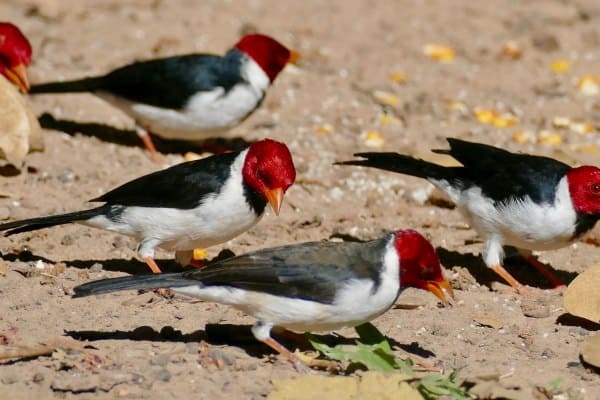
In the vibrant tapestry of the Amazon rainforest, the Yellow-Billed Cardinal stands out not just for its appearance, but for its intriguing behaviors as well. With a dash of curiosity and a pinch of audacity, these avian charmers fearlessly explore their surroundings, hopping agilely from branch to branch as if choreographed by nature itself.
But it’s not just their agility that captures attention; it’s their melodious serenades that steal the show. The Yellow-Billed Cardinal is an accomplished vocalist, boasting a diverse repertoire of songs and calls that range from flirtatious trills to commanding melodies. Each tune is a glimpse into the cardinal’s world – a world of courtship, territorial boundaries, and family ties.
And speaking of family, the Yellow-Billed Cardinal displays remarkable devotion in its roles as both partner and parent. The male sings his heart out to court his mate, his vibrant plumage and soulful serenades weaving a romantic tale of dedication.
As nesting season unfolds, the pair becomes a dynamic duo, sharing the responsibilities of nest-building, incubation, and chick-rearing. It’s a partnership built on trust and shared effort, a reminder that nature’s bonds can be as complex as they are beautiful.
Social gatherings are another highlight in the Yellow-Billed Cardinal’s repertoire. These birds are often seen congregating in small groups, where playful interactions and intricate communication dances unfold. These gatherings serve as more than just a chance to socialize; they also reinforce group cohesion and the intricate pecking order that keeps the flock harmonious.
Habitat
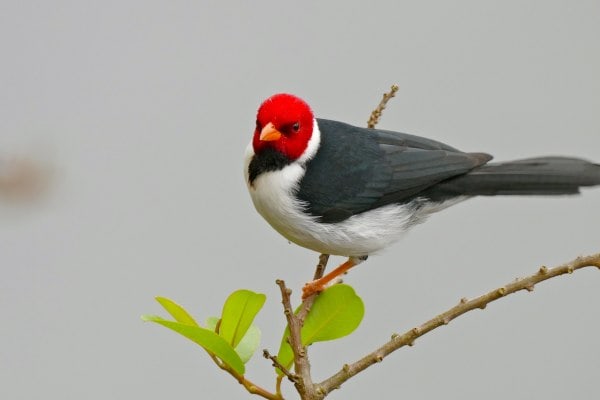
In the heart of the South American rainforest, the Yellow-Billed Cardinal finds its haven. Amongst the verdant canopy, these vibrant birds thrive in dense shrubbery and tangled branches. Their striking plumage and melodic calls blend with the chorus of the rainforest.
Range
The Yellow-billed, originally native to South American dry forests from southeastern Bolivia and central Brazil southward to northern Argentina, has become a naturalized non-native resident in Hawaii. Though the exact introduction date remains uncertain, evidence suggests establishment likely occurred in the 1960s, potentially originating from Pu’u Wa’a Wa’a Ranch or Kailua-Kona Airport. This captivating species rapidly spread along the Kona coast and further, including places like Hapuna Beach SP, Na’alehu, and Whittington Beach SP.
Conservation Status
Listed as a species of “Least Concern” on the IUCN Red List, the Yellow-Billed Cardinal benefits from its relatively wide distribution across parts of Brazil, Argentina, Paraguay, and Uruguay. However, this status doesn’t mean complacency; it reflects the need for ongoing vigilance.
Interesting Facts
1. Courtship rituals
During courtship, the male engages in elaborate displays, including fluffing up his feathers, puffing out his chest, and singing intricate songs. These displays not only attract a mate but also establish his territory.
2. Color variation
While the classic Yellow-Billed Cardinal has a black facial mask, there is a rare variation known as the “White-Billed Cardinal,” where the facial mask is white instead of black. This color variation is relatively uncommon and adds to the intrigue of these birds.
3. Molting and plumage
Yellow-Billed Cardinals undergo molting, a process of replacing old feathers with new ones. During molting, they may appear somewhat duller in color as their vibrant plumage is renewed.
4. Nest Parasitism
Brown-headed Cowbirds, known for laying their eggs in the nests of other bird species, have been observed parasitizing the nests of Yellow-Billed Cardinals. This behavior can impact the cardinal’s nesting success.
5. Tribal mythology
In some indigenous South American cultures, the Yellow-Billed Cardinal holds cultural significance and is featured in tribal myths and folklore, often symbolizing different aspects of nature and life.
Frequently Asked Questions
1. How do Yellow-Billed Cardinals interact with humans?
In some regions, Yellow-Billed Cardinals have adapted to urban environments, making them familiar sights in parks and gardens. They might approach bird feeders and can become accustomed to human presence.
2. What is the lifespan of a Yellow-Billed Cardinal?
In the wild, Yellow-Billed Cardinals typically have a lifespan of about 5 to 7 years. However, under optimal conditions and in captivity, they might live longer.
3. Do they face any natural predators?
Yellow-Billed Cardinals may face predation from birds of prey, snakes, and other predators that target bird nests and their eggs.
4. Can Yellow-Billed Cardinals be kept as pets?
While their striking appearance and songs might make them attractive as pets, it’s important to remember that keeping wild birds as pets can have ethical, legal, and conservation implications.
5. How do Yellow-Billed Cardinals contribute to ecotourism?
Their vibrant plumage, melodic calls, and adaptability to urban environments make Yellow-Billed Cardinals a draw for ecotourists and birdwatchers, contributing to local economies and awareness about conservation.

